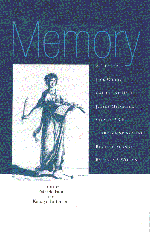Book contents
- Frontmatter
- Contents
- Introduction
- 1 Disturbing Memories
- 2 ‘Turning a Blind Eye’: Memories of Empire
- 3 Memory and the Making of Fiction
- 4 Memory in Oral Tradition
- 5 Memory and Psychoanalysis
- 6 When Memory Fails
- 7 How Brains Make Memories
- 8 Memory and Neural Networks
- Notes on Contributors
- Acknowledgements
- Index
2 - ‘Turning a Blind Eye’: Memories of Empire
Published online by Cambridge University Press: 05 June 2012
- Frontmatter
- Contents
- Introduction
- 1 Disturbing Memories
- 2 ‘Turning a Blind Eye’: Memories of Empire
- 3 Memory and the Making of Fiction
- 4 Memory in Oral Tradition
- 5 Memory and Psychoanalysis
- 6 When Memory Fails
- 7 How Brains Make Memories
- 8 Memory and Neural Networks
- Notes on Contributors
- Acknowledgements
- Index
Summary
In April 1991 ‘Cadbury World’ was opened by the then Prime Minister, John Major, in the multiracial city of Birmingham, England. ‘Cadbury World’ is a living museum, the museum of Cadbury, the celebrated Quaker family who established a world famous cocoa and chocolate business and made their name a household name. ‘Cadbury World’ replaced the factory tours and educational visits which Cadbury provided until 1970 on the Bournville site. After the factory was closed to visitors the firm received thousands of requests for information and finally decided to construct a purpose-built ‘experience’ – the chocolate experience – next to the factory. This chocolate theme park attracts half a million visitors a year. It combines an exhibition with a brief factory tour. It aims, in the words of the accompanying brochure, to ‘reflect the heritage of the UK's number one chocolate company‘.
It tells the story of Cadbury, the Quaker family firm which began in the 1830s as a small retail business in Bull Street, Birmingham, went through difficult times in the 1850s but by dint of the hard work of two Cadbury brothers was successful enough in the 1870s to warrant the purchase of extensive land in Bournville and build the ‘factory in the garden’, which became famous the world over. There the large modern factory was combined with a model village and community facilities to provide a whole way of life for Cadbury employees.
- Type
- Chapter
- Information
- Memory , pp. 27 - 46Publisher: Cambridge University PressPrint publication year: 1998
- 5
- Cited by



